An idea that comes up reasonably often on the internet is the suggestion that swarms of cheap drones are about to revolutionize warfare, rendering current systems hopelessly obsolete. After all, new technologies have repeatedly upended civilian life. Why shouldn't they do the same for the military?
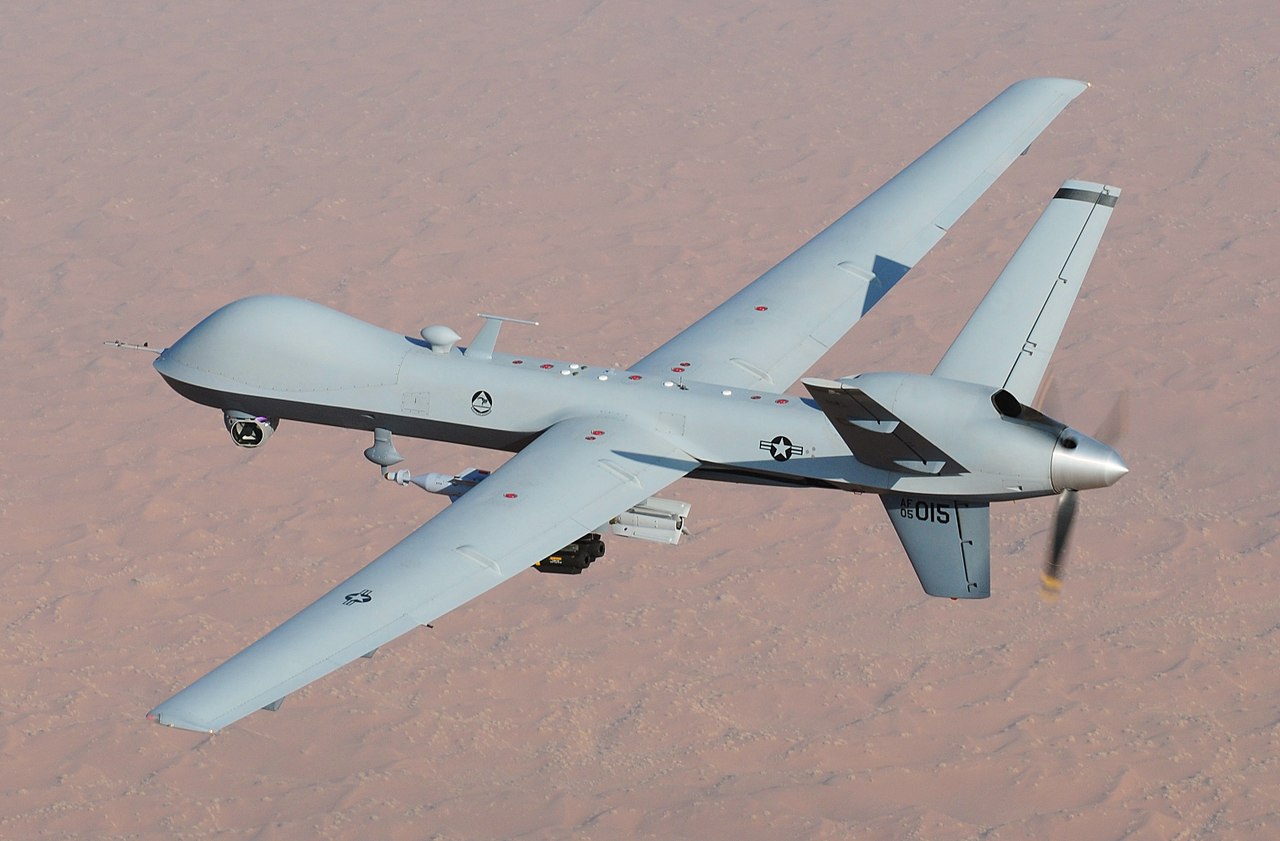
The future of warfare?
There is a lot to be said for this view. Weapons that can guide themselves to the target have the potential to dramatically change how wars are fought, cutting the number of weapons required to achieve a result, and reducing collateral damage. Some types of ships might become essentially obsolete, unable to justify their cost in the face of the new threat, while new systems will have to be developed to counter the threat. In fact, this stands to be the biggest revolution in warfare in decades.
There's just one problem for the prophets of the drone. While the above paragraph is 100% true, it's in the wrong tense. Everything in it already happened in the period 1940-2000, and the situation in the naval/military world today is the direct result of all of this. Any further improvements at this point look set to be more evolutionary than revolutionary, and after most of a century of evolution, the systems we do have are very good. Displacing them will be difficult given their head start, and the complete unsuitability of civilian systems for the military environment.
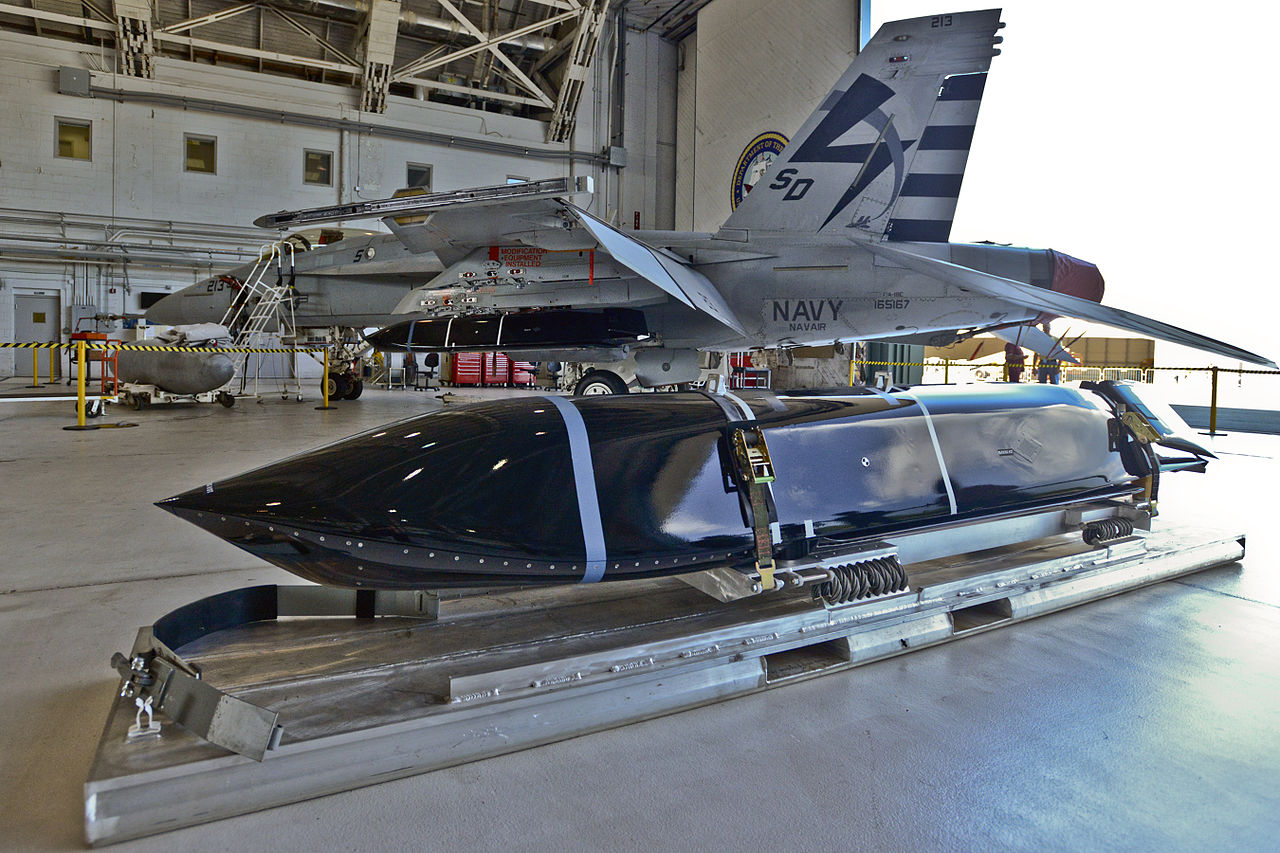
The present of warfare
The basic reason for this is that a drone loaded with explosives and set to fly into a target has another name: the cruise missile. The concept dates back to WWI, with serious efforts in the US and Britain to produce unmanned planes that could be guided to the target by autopilot or radio signals. This was premature, but WWII saw the technology reach some level of maturity, with both sides producing effective weapons. The Germans in particular caused significant consternation among Allied navies, consternation heightened when the Japanese began using cruise missiles with an organic guidance system to deadly effect. As a result, this new threat was one of the dominant concerns of the early postwar years, giving rise to new weapons, new technologies and new tactics. The sinking of the Eilat brought this home to anyone who had missed it, and Western navies responded with even more defenses and drones of their own.
But recent years have seen massive advantages in drone technology, with systems becoming cheaper and more ubiquitous. Surely this will spill over into the defense world, making cruise missiles far cheaper and allowing them to overrun targets by weight of numbers? Again, not so much. The basic problem is that the proliferation of civilian drones is driven by improvements in a few specific areas, notably cheap control electronics, electric motors and batteries. None of these have much relevance to cruise missile technology. The military has always been able to afford expensive electronics, and many of the other new capabilities have been in use for the last quarter-century in weapons like JDAM and JSOW.
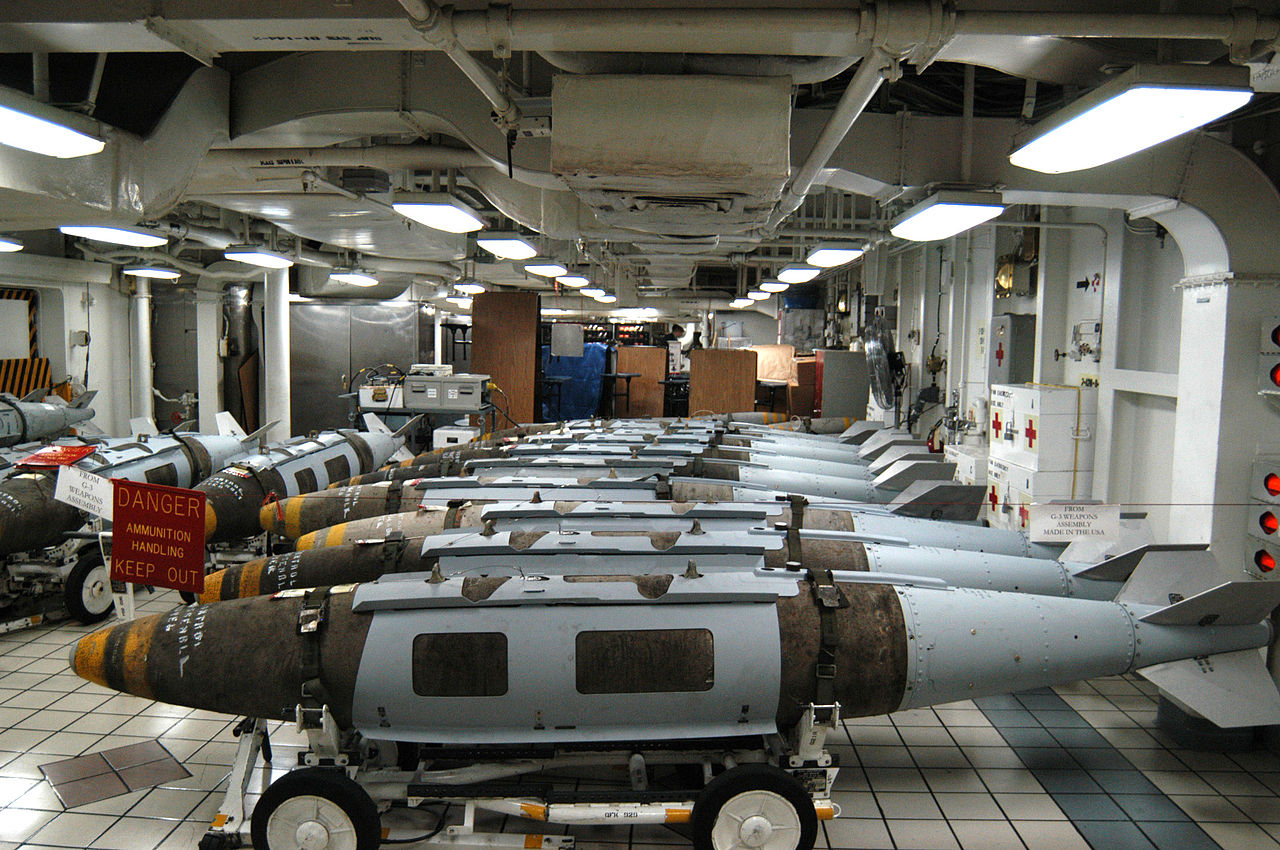
GPS in military service
The big problem with the use of electric propulsion is the main issue with the drone revolution thesis more broadly: the performance requirements of cruise missiles (and military systems in general) flow directly from their missions, and those missions don't magically get easier if they're done by drones instead of whatever is doing them now. For instance, say we want to build a drone to replace the F-35 as a strike platform against static targets.1 Well, it's going to need a warhead capable of taking out most targets of interest, and some of those are pretty hard to kill no matter how accurately you hit. Figure that this means a payload of at least 500 lb. Right off the bat, it's a lot bigger than any consumer drone, and even most commercial ones. Second, it needs a range of at least a couple hundred miles, so it can be launched from similar bases to the ones the F-35 uses. Third, it needs to be fast enough that it's not trivial to shoot down, which means at least high subsonic. This rules out electric propulsion and even most propellers, so at this point, we're looking at a small jet engine. Lastly, it has to be able to navigate to and hit the target at night, in bad weather and in the face of countermeasures, so we can't just stick a GPS chip and a camera in and call it good. This isn't an impossible problem, but it's going to drive up the cost of the system quite a lot. But even with all of those compromises from the original vision, this drone could still be useful for some cases, right? While it's certainly not cheap to build one of these things, it's still going to be handy for cases where the target is just too dangerous for a manned aircraft, isn't it?
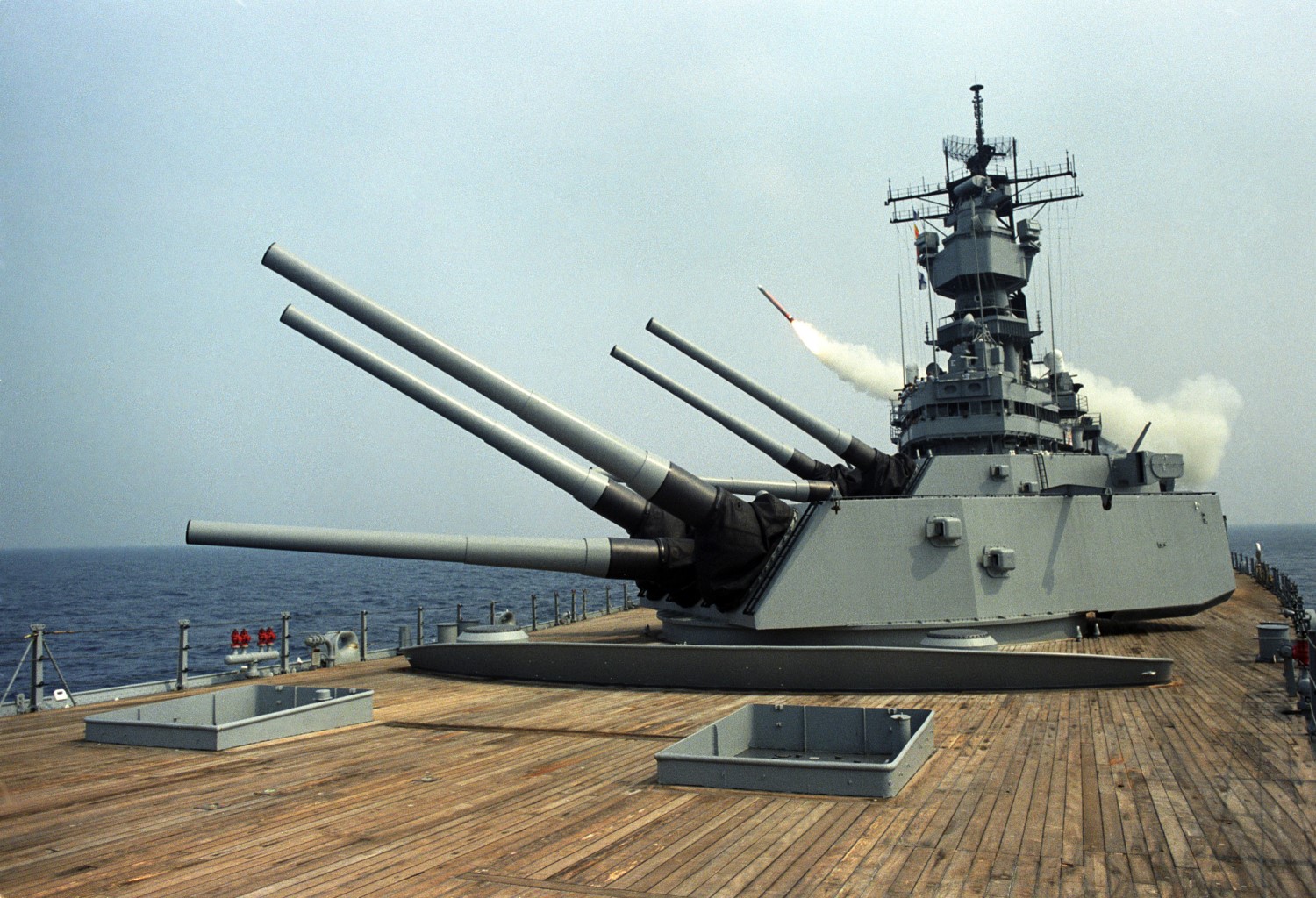
Iowa launches a drone strike in the 1980s
Of course it is. Which is why something with these characteristics has been a mainstay of the US arsenal for the last 30 years. So long as there isn't a technological shift that demands an entirely new architecture, incremental improvements can easily be incorporated into the basic Tomahawk, as has happened repeatedly over the years. And any technological shift is likely to require more capability, not less, pushing us further out of the territory where the civilian drone has any relevance. The recent trend in hypersonic weapons is probably the best example of this. There is some room for new developments to push the bounds of the trade space for weapons, but the results tend to be far more evolutionary than revolutionary. Tomahawk itself is one of the biggest exceptions to this, as it gave the Navy's surface ships and submarines a strike capability they had essentially never had before, and even it didn't totally upend conventional strike warfare. So while weapons like JDAM, SDB and the Israeli Harop2 have added new capabilities, none have managed to change the fundamentals.
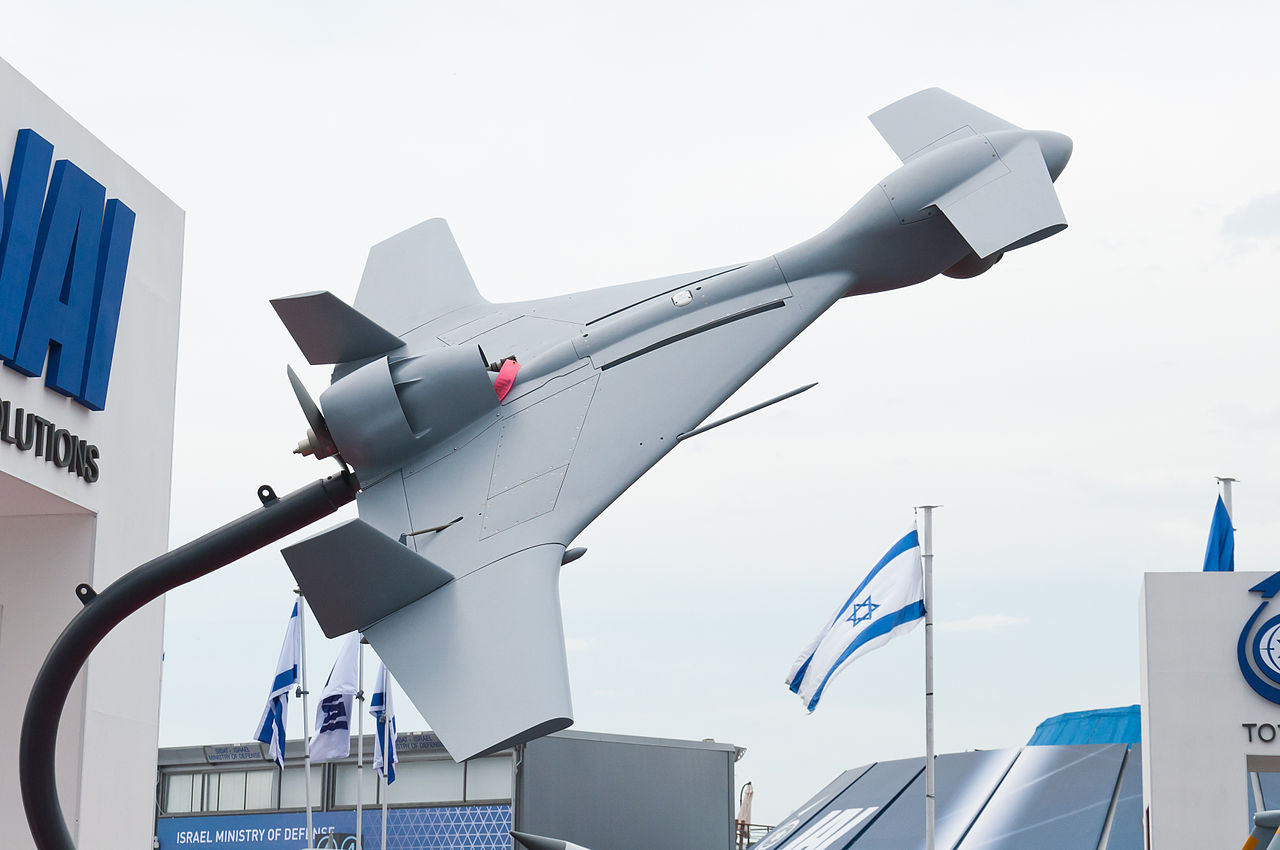
IAI Harop
OK, but are we sure that we couldn't just substitute a huge quantity of cheap systems for the expensive ones? Quantity has a quality all its own, and if we throw enough drones at a carrier, it's going to die. Again, no. In theory, you could overwhelm a carrier by throwing drones at it, but for cases where the "drones" aren't just cruise missiles, this is like attempting to break down a door by throwing mashed potatoes at it.3 No matter how much you use or how hard you throw, it's still not a good plan relative to using something more effective. Obviously, weapons capable of defending against cruise missiles will be more than capable of taking out cheap drones, although the equally obvious counter there is that the defensive missile will cost far more than the drone does. But any drone that isn't just a cruise missile will be a far easier target than most modern weapons, which opens up the possibility of much cheaper countermeasures. For instance, something with the performance of a Reaper drone would be considered a relatively low-performance target in 1945. The carrier's fighter pilots would no doubt burst with delight at the possibility of getting to go up and make dozens of gun kills, at least until they got bored of it. Phalanx would also be extremely effective in this case, as it's usually credited with getting the third round on target against much faster cruise missiles, and each round costs a mere $30. And of course there are several hundred SAMs on the carrier group, and using them is cheaper than losing the carrier.
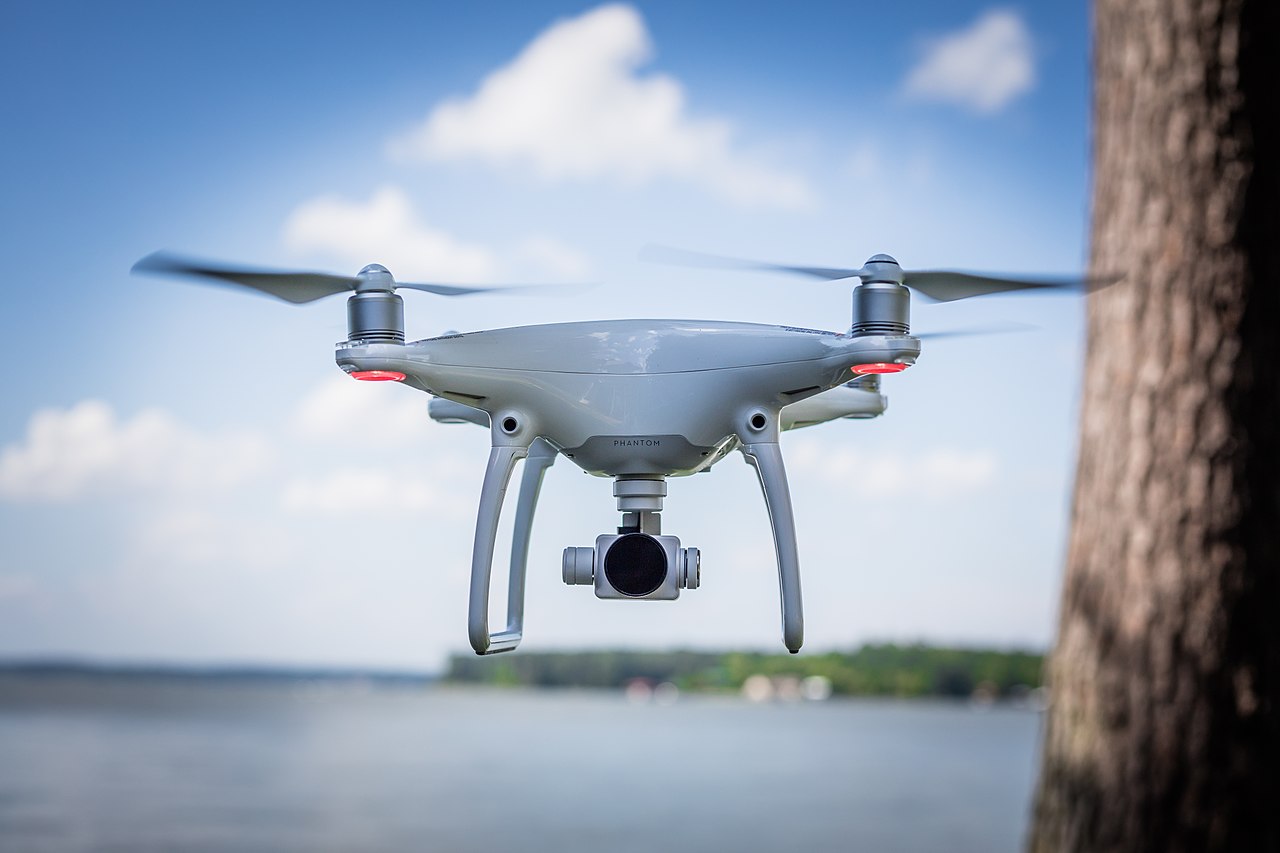
Definitely not the future of warfare
The situation gets even more absurd if you propose using quadcopters. The first line of defense there is the sheer difficulty of getting them in range. Helicopters are not particularly efficient, and batteries are not very energy-dense, so range is limited to low double-digit miles at most. Whatever platform is to launch them has to get within range without being destroyed first, at a range that is well within the carrier's defense perimeter. Even if it was to somehow survive to launch its payload, the quadcopters themselves are going to be extremely vulnerable to electronic warfare. A modern naval radar like SPY-1 is easily capable of putting out enough power to fry a quadcopter, if not actually melt it in mid-air.4 5" VT rounds should also be quite effective, and at a lower cost than the quadcopters themselves. There's also the question of what said quadcopters would do upon reaching the target. Their payload is quite limited, and while they could do extensive damage to surface features, they aren't going to actually sink ships.
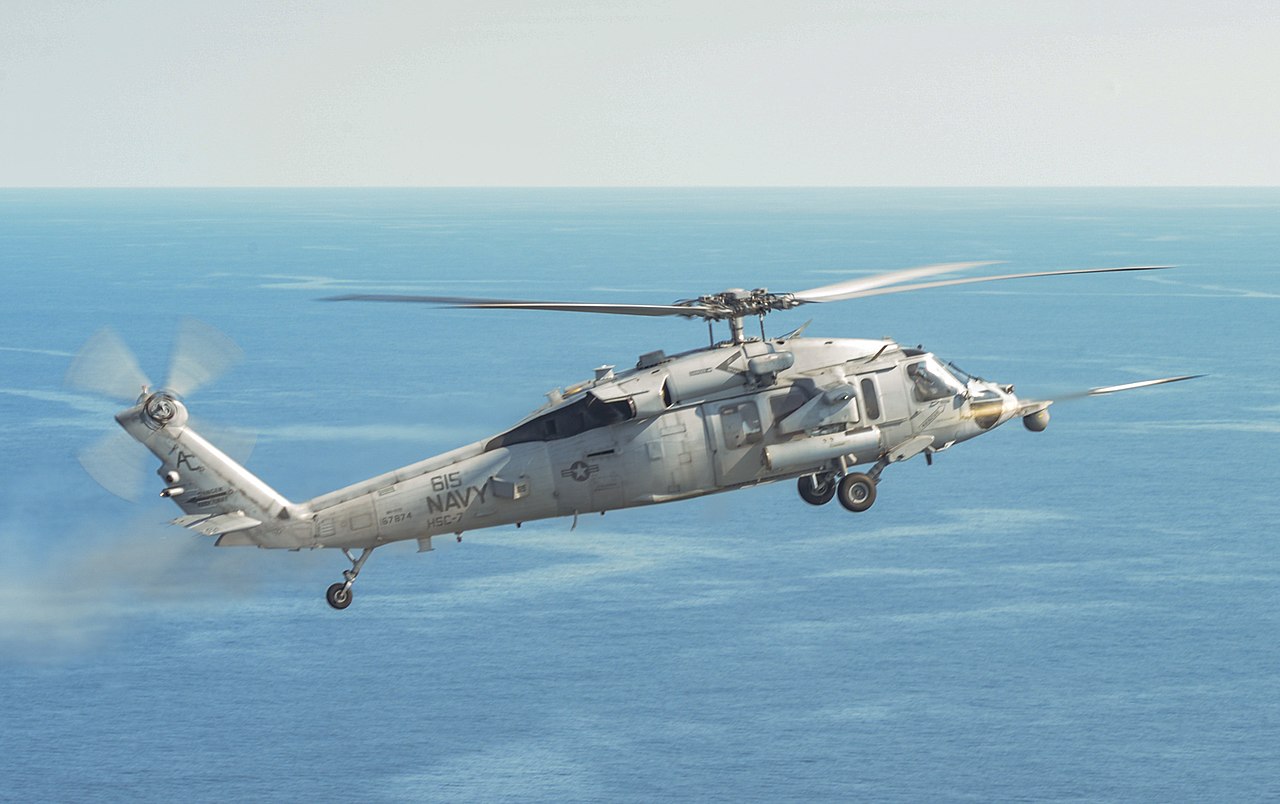
APKWS test
And that's merely the situation if the threat was to spring up today, fully formed. But building this kind of anti-carrier system would take time, and things get much worse for it if the US has the ability to respond by finding cheap counters that can destroy the economic warfare argument. For the outer defenses, one likely option is APKWS, a 70mm Hydra rocket modified with a laser seeker. A single Super Hornet should be able to carry up to 76 of these, and tests have already been carried out showing them to be effective against cruise missiles. Closer in, radar-directed guns would be tremendously lethal, with the 57mm used on the LCS a likely standout in this role due to a combination of range and rate of fire. And there's the upcoming threat of lasers, which will be tremendously effective against slow drones at a cost of only a few cents a shot. With those, this kind of threat would be as obsolete as horse cavalry.5 And all of this ignores the soft-kill options, which are particularly likely to be effective against cheap drones that lack the ECCM capabilities of proper cruise missiles. An arbitrarily large attack might be defeated with a couple of helicopters, a giant banner of a CVN and some smoke rounds for the SRBOC. And for one last nail in the coffin, there's the problem of deploying giant swarms of drones. The USN is likely to notice them before they are actually launched, and engage in some drone-on-drone warfare, which should thin the herd considerably.
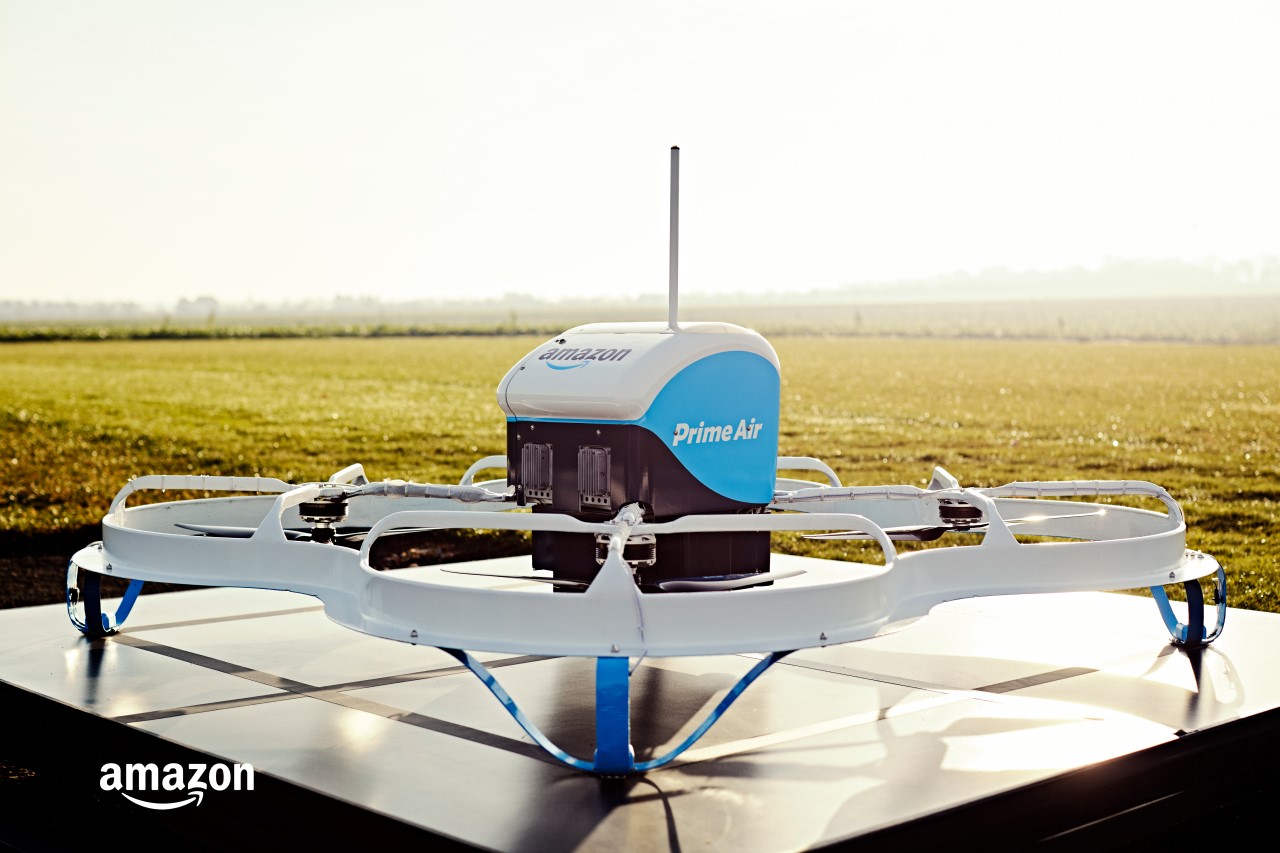
Don't expect same-day drone delivery of explosives to be offered by your favorite online vendor any time soon
On the whole, the arrival of unmanned weapons has already revolutionized naval warfare about as much as they are going to. Things on land might well be different, as they allow greater integration with small units, but this is not true at sea. Missiles have changed a lot of things, the most notable impact at sea being to give surface ships capabilities that were previously reserved for aircraft carriers. But proponents of an ongoing drone revolution seem to believe that making missiles worse will somehow make them unstoppable, or at least give them cost leverage over existing weapons. But this strategy relies on a complete lack of understanding of how modern military weapons work, and in practice, changes in missiles are likely to be in the direction of more capability and possibly more expense, not replacing them with swarms of very cheap and very useless "drones".
2023 Postcript: This was written shortly before war broke out in Ukraine, and I think it's held up reasonably well. The biggest mistake was one of framing, in that I was implicitly looking at the role of drones in high-end naval/air warfare, and didn't fully account for their impact on scales that are essentially irrelevant at sea. In retrospect, I should have been more clear that drones did have the potential to give new capabilities to ground troops that hadn't reached them during the missile revolution. That said, the basic thesis with regards to high-end systems seems to have held up reasonably well. I would also point out that we're seeing a transitional stage in Ukraine today, and I expect that over the next decade, infantry/vehicle anti-drone systems will get significantly better relative to drones.
1 Note that this is only one of the F-35's jobs, and not the hardest one by any means. ⇑
2 While this attracted a fair bit of press back in 2020, it's essentially an anti-radiation missile that just happens to have a really long loiter time and the ability to land itself if it doesn't find a target. But it took a ton of engineering to make it work, and it's still built by a major defense company for defense system prices. ⇑
3 And if they are cruise missiles, I've covered that too. ⇑
4 This is also a serious issue for other missiles, although they're probably big enough to get some hardening, and they'll also move a lot faster. ⇑
5 Yes, I know when the US military last participated in a cavalry charge. The comparison is deliberate. ⇑

Comments
A bit off topic, but why are the middle gun in the Iowa's turrets depressed in the picture above?
No idea. I highly doubt the turret position has anything to do with the Tomahawk firing exercise, unless maybe they're trying to track it with the gunnery radar. But I'm not sure why they'd depress the center gun, or elevate the outer guns in that case. Maybe they were also about to do regular gunnery, and were firing split salvos for some reason.
Poking at the premise of this article - the constraint is that we're talking about high end peer naval competition warfare here, and not about the impact in terms of COIN and raising the minimum level of capability that can be expected in those types of environments (mostly a ground pounder's problem, and not really a naval thing) right?
Hey you're just thinking the wrong kind of quadcopters https://www.youtube.com/watch?v=XmkXw3GLZ64
Sensors and electronics are getting smaller with time, not larger, and if you can aim well I don't think you need a lot of explosives to mission-kill a ship, which means that if a missile has a constant mass fraction with a "payload" of sensors, electronics and explosives, the optimal mass of a missile will shrink with time.
On the other hand, speed is armor, and there's the thing where the speed of a flying body is proportional to the square root of the product of specific thrust and length, with specific thrust obviously being proportional to specific energy consumption per distance (so bigger is faster).
The situation is of course dramatically different for the mud forces, where distances are often shorter (which means you can use lower endurance), you typically don't try to buzz CIWS systems (which makes speed less important) and being on the right side of every hill is more important than having the best sensors (which makes expensive sensors less important), which means there is much more use for smaller drones there.
BTW, according to the sources I've read, Harop is typically used in optically-guided mode against unprotected ground targets, not radiation-guided. Tho its supposed to have anti-air-defense functionality, so it might have some tricks to beat CIWS.
Sorry for the 10x-post (can some admin delete it?), post button was slow.
Yeah, I expect these to be to missiles what IEDs are to landmines.
Potentially they could be useful to developed armies in sufficiently dense environments (jungle, urban) where the manoeuverability of a propellor craft trumps the speed of a rocket. Being able to integrate more closely with infantry than manned aircraft might also be beneficial. But this wouldn't be COTS.
@ryan
I'm not going to dispute that drones will have an impact in a COIN situation. Lambert put this well, although I suspect that they'll have less success against well-prepared forces than IEDs did just because they have to move and expose themselves. I am mostly pushing against the "this will change everything" brigade, because it won't.
@Miles G
I'm pretty sure I'd take 5 trucks full of anti-ship missiles over the giant quadcopter. Also, who fills the deck of a future CVN with a mix of Harriers, A-4s and F-35s?
@Ariel
I think there's a fairly hard limit on how low that number can get. Warship designers try to avoid getting mission-killed, and while they probably can't avoid having critical points, they're going to bury them deep in the ship, and they probably won't go around advertising where they are. Precision targeting definitely isn't bad strategy compared to "just try to hit it", but I wouldn't really want to sacrifice that much in the way of warhead to it on an ASM.
I should probably add a clarification that there's a lot more room for this stuff to affect ground combat. In general, I'm trying to talk about naval/deep strike/air, not what this is going to do to infantry.
I think the Irani and Azerbaijanis had used large drones for deep strike pretty well. If you're not buzzing CIWS systems and planning on not getting detected before you're pretty close to the target I'm not sure Mach 0.5 differs from Mach 2 so why waste money on powerful engines, and you can fly cruise missiles (or suicide drones) far more aggressively than JDAM-armed planes when you are mostly but not entirely sure you are not going to encounter anti-air.
Still, the difference here is more that armies that never had the capability to deploy cruise missiles in significant numbers now can, which is pretty big I think.
Aren't missile system lifecycles much shorter than ship lifecycles, which means missiles adapt to ships rather than the other way 'round? I wouldn't make my strategy rely on being able to sneak a hand grenade through the main reactor cooling shaft, but you could probably get a nice reduction compared to missiles aimed at a random point in the ship, especially if you can use multiple hits to destroy multiple arms of a redundant system.
@bean But it has a version with cruise missiles, at the end of the video! It pops over horizon anyway, to make sure those imperialist aggressors on the carrier can see the face of their doom. Or maybe those are just huge rockets, I dunno. Shorter range & no guidance => more room for warhead => more dakka => strictly superior weapon.
(In case it's not obvious I'm kidding, hope that's allowed under serious posts. Just wanted to introduce people to the mighty genius of Dahir Insaat)
@Arial
Fair enough. Far less so at sea than on land, but even then, we're looking at giving Iran and Azerbaijan capabilities that the US has had for the last couple of decades.
This sounds very plausible, and I wouldn't be at all surprised if some modern ASMs had that capability. There are definite gains to be found in making sure the hits are in the right spot relative to just hitting anywhere on the ship. My point is just that given how big and tough ships are, I'd still rather have a Harpoon instead of an SDB.
@Miles
I thought you were probably joking, but wasn't sure. Definitely wasn't sure if the people who made it were joking.
Even if you were looking for trading off capability for cost you'd be better off with a pulsejet powered cruise missile than a toy drone but unless you can harden the electronics it'd only be useful over land or against a ship that can't defend itself.
But if you can figure out how to harden the guidance system cheaply then mass swarms might actually be useful.
Ariel:
New ships adapt to new missiles, sometimes even before the missiles are designed.
How about underwater drones? (or, I guess, long autonomy torpedoes). Are there ways of changing the submarine game if you don't have to worry about putting a squishable air space in the middle?
"Ships are just like tanks, only bigger" (except that the vast majority of the points addressed are also valid for defending land vehicle targets)
The Jeune Ecole (or Sonja Swarm, or Fuzzy-wuzzy strategy, depending on which brand of sci-fi reference you'd like) keeps getting "rediscovered"
@FXBDM If I were in a cave with a box of scraps and I wanted to threaten surface warships, a narco-sub with a warhead instead of drugs is where I'd start.
It'd probably be one of those weapon concepts that has a shelf life. There's a window before the opposing navy adapts its ASW techniques or brings back torpedo nets to render it ineffective.
@FXBDM
I don't think this will have too much impact on undersea battles. All of the building blocks for that sort of thing have been around for decades, and yet nobody seems interested in doing it, at least if we exclude CAPTOR mines. The biggest and most obvious problem I see is that the ocean is big and opaque. So you can't talk to it that reliably, and fitting a good enough sensor array to actually find targets makes it big and expensive. CAPTOR has the advantage of not having to move, which means the sensor only has to match torpedo range.
@Ian
"We should replace our big platforms with lots of smaller ones" does come up fairly often, yes.
@Lambert
The shelf life on that one expired in about 1943.
@Miles,
Man, I HOPE the Russians try to build those! Such an incredible waste of resources, for a country that already doesn't have a lot of resources to spare. Sadly, I expect the Russians to successfully resist the siren song of super-sized quad-copter drones.
But the air wing composition on the CVN is even weirder than previously suggested. "CVN-85" (which should be commissioned in 2048 if the current schedule is maintained) is shown carrying 1) two-seat trainers based on a light aircraft from the mid-1950s, 2) light attack aircraft from the mid-1980s with the approximate performance of said light attack aircraft from the mid-1950s, 3) an aircraft that was never built even in prototype (carrier-based F-22s!), and 4) some variety of H-60 helicopters (normally you'd presume those were navalized, but in this company it's anybody's guess).
Well, the F-35s and H-60s at least make some sense. The rest? Not so much.
What the hell is a carrier doing close enough to land that a gatling gun can hit it anyway? How big is that gatling gun? (A 30mm could definitely render planes unflyable in one shot but isn't going to be blowing the airframes into bits either. And why build, say, a 76mm gatling?) Everything about the scenario is screwy. I'd figure even a carrier dumb enough to get suckerpunched like that would have popped off a few RAMs at the first quadcopter, meanwhile the TAO on the CG over the horizon is calling out "kill link track 4786 with SM-6"...
In regard to the "replace big platform with lots of miniplatforms" - does anyone know of a good writeup explaining why "mini-carriers" don't really make sense? I've been looking for something I can easily throw to people who bring that one up. I mean, it's not entirely senseless - CVEs used to be a thing that made sense, after all - but a modern mini-carrier would get you 50% of the capability for 85% of the cost, at best, not the other way around like the proponents seem to think.
"Ships are just like tanks, except bigger" - now there's probably the biggest thing that armchair generals miss, especially regarding armor, and why ships don't have much of it anymore while tanks still do. Sometimes I see the flipside, about why we didn't build HEAT shells for smaller guns to allow DDs and CLs to punch through BB armor. (Put a hole in the armor, that it would. Do much else? Not so much.)
Also worth pointing out that HEAT rounds didn't get good until during/just after WWII. By the time that this would have made a meaningful improvement over standard AP rounds, there weren't any ships to shoot at. But mostly, yeah, it's because tanks are pretty fragile if you can get through their shell, and ships are not.
Huh. I must have mistaken the F-22s for F-35s, under the assumption that anything with those tails must be the actual naval plane.
The best version I know of is in Friedman's US Carriers an Illustrated Design History. I may write up a version of it here if I feel like it at some point.
Doesn't the USN have RAND do a study virtually once a decade on the small carrier question, only to have every report's conclusion read, in summary, "yup, the scaling laws haven't changed"?
@Bean: I've stumbled over at least the elevator-pitch version of your Arguments Against The Small Carrier in comments several times. And it's in the So You Want To Build A Navy series; no?
@Directrix Gazer
You're probably right on that, although you'd be better placed than me to know.
@Ian
I remembered doing it in the comments a couple times. Had forgotten about SYWTBAMN, but you're right that it's there. Hazards of doing this for so long.
As I understand it, there were a couple things going on there. One is that WW2 carrier aircraft were a lot smaller than modern, with e.g. an F4F Wildcat being about 1/6 the dry weight of an F35, in addition to being enormously simpler to maintain and operate. Combined, that means the minimum viable size of a ship that can operate a worthwhile air wing was quite a bit smaller during WW2 than today. And that's leaving aside questions of runway length for takeoff and recovery, which is traditionally one of the main forcing functions for minimum carrier size although S/VTOL-capable aircraft like the F35C or the Harrier can mitigate runway requirements.
The other is that CVEs were build for a specific mission that was a huge deal for the US and Britain in WW2: providing air cover for reconnaissance, anti-submarine warfare, and non-line-of-battle combat for convoys and smaller task forces when they're out of effective range of land-based air cover. For this role, you don't need a particularly big air wing, you can get away with a much slower ship especially on convoy duty (you just need to keep up with merchantmen and troopships, vs a fleet carrier that needs to be able to chase down or stay out of gun range from battleships and battlecruiser), and you can skimp on armor because you're not intending to send the ship into battle. You just need a cheap ship that can host air cover for your convoys so you can concentrate your fleet carriers at the strategic point of decision.
In a modern context, that niche isn't really there, as land-based and fleet-carrier-based aircraft are enormously more capable, as are other ASW platforms (attack subs, light surface warships, helicopters, etc). If you want air cover in the middle of the Atlantic, you can do that with land-based aircraft and mid-air refueling.
Eric Rall:
Which doesn't have a lift-fan.
@Anonymous
It's pretty obvious that he meant F-35B.
@Eric
I'd say that the bigger change there was the introduction of helicopters. Now, surface escorts can self-host airpower instead of needing a dedicated ship to do it for them. Land-based MPAs fill a slightly different niche from shipboard aircraft.
I think some of the confusion about mini-carriers might come from an excessive focus on fighters, too. I mean, we have STOVL fighters, why aren't those just as good? Folks forget entirely about AWACS, tankers, logistics, etc, as well as about the ability to maintain and repair aircraft and carry fuel and ordnance for them. I see that confusion a lot when folks propose sticking a single F-35 on a destroyer, say. What would a single fighter be able to do that actually needs doing, that a helicopter doesn't do better? (Never mind that STOVL is not VTOL, and even if F-35B can technically do a vertical takeoff, it limits payload unacceptably.)
IMHO, the biggest thing that I think "drones" (ugh) will do for military operations is to make it a lot easier and cheaper to put lots of mobile, connected sensor platforms all over the place to increase awareness. For the question about undersea drones, roving platforms that have a floating beacon that can report back to base their findings to help gain information about what's going in under the waves. Also decoys of varying quality.
Also, I think the cheapening of advanced sensors means that a lot of countries in 10-15 years will be able to get into the HALE/MALE (probably MALE, let's be honest) game, which could be really useful for countries that have big EEZs. Heck, I can even see a world where poor countries rent out MALEs to do MDA for their Coast Guard from random contractor companies; bonus points if they do it using UN grants or something.
It seems like the four big panels of the radar would be good targets, no? The ship could still move, but would be effectively blinded (depending on how effective networking is, etc.)
@redRover
I suspect that the radars have some capability to operate with damage. Don't know exactly how much, and it probably varies with different systems (AESA will do better than PESA), but I don't think "shoot the radars off" will be the solution.
@Blackshoe
Excellent point about the sensor aspect--both atmospheric and underwater since they can often operate passively. Will be interesting to see the shape this takes.
I feel like there’s too much focus on high end carrier battles that drones probably won’t bring much to the table for. At the other end of the spectrum, a frigate carrying a few APKWS Firescouts could be, if not revolutionary, extremely useful for a lot of other jobs we currently use helicopter crews for.
Just having the fleet be capable of keeping eyes on cluttered shore terrain in straits and island groups without endangering pilots could be a game-changer in some situations.
Sadly, drone warfare seems to push the needle even more towards empowering totalitarian governments.
(bean: Edited for Culture War.)
I broadly agree about the sensor benefits of drones and of the advantages of somewhat-smaller, unmanned aircraft being usable in places where we would prefer not to risk manned aircraft. That's helpful. I also wonder if a rotary-winged AEW drone would be a useful thing to have - not as good as a Hawkeye but you can stuff one on an LHD or LPD, and maybe even on an LCS or DDG in a pinch, thus allowing at least some amount of AEW coverage even if the CV takes a hit or a cheeky hidden SAM battery splashes your Hawkeye or something like that. Especially with so many anti-CVBG tactics relying on a suckerpunch, reducing the odds of not seeing the suckerpunch coming seems useful.
But that's a quantifiably different situation from the kind of "swarms of 10-kilobuck quadcopters" that so many internet wags posit.
I'm certainly not trying to claim that we won't see benefits from drones. We will. But what we will see going forward is very much evolutionary, not revolutionary. A Fire Scout with APKWS is a lot like a Seahawk with APKWS, just cheaper to fly and you can carry more of them. A Triton isn't that different from a P-8, except cheaper to operate and able to stay out longer. Are they better? Sure. But they're 20% or 50% or maybe 100% better, which makes them fit neatly within the structures we have today. To be really revolutionary, you need to be at least 1000% better, like Fritz-X or Paveway/JDAM, or to give an entirely new capability that just wasn't there before, like Tomahawk. And I don't see that happening from all of this.
@Jade
You can probably physically fit a wedgetail radar on top of a V-22, though one wonders about the aerodynamics of that in helicopter mode, as well as the interference from the rotors on the radar.
@redRover:
Without getting into too much detail for obvious reasons, the array faces themselves are very resilient. The kind of drone you're just strapping explosives on to is not going to affect radar perfomance in anyway.
A 700 lb armor piercing warhead would...but a) those missiles shouldn't be hitting that high anyway), and b) it's also going to do a lot of damage no matter what (there's a big debate right now about how well any modern warship will handle damage and remain mission-capable; fiber-optics and modern computers do not like massive shock damage, it seems.
Shock sensitivity is, as I understand it, behind some of the move back to copper from fiber for shipboard network cabling. On Ramage, some of our NIPRNET switches had both a fiber link and a copper link to the other switches.
Fiber has some real advantages but copper sure does handle shock better and is easier to repair (and degrades more gracefully - a copper link can downgrade from 10Gbit down to 100Mbit if one pair is severed, say - this sucks but is a lot better than no connectivity at all.) As for shock-hardening computers, SSDs help a lot. I don't know how widely SSDs are deployed on ships - they were pretty new when I got out, but we had one in a few workstations. (COMMO, ITC and me as the LAN shop LPO, and a few weeks later the captain asked for one, but that was it.)
Do smugglers not use amphibious subs? Must have just been a fever dream/ unethical business idea/ what if Walter White was a roboticist instead of a chemist.
The advantage over something like a CAPTOR would be not needing to send an aircraft/boat over to where you want to deploy it. Might be useful for countries that don't have (spare) subs and can't count on the other side not getting air supremacy.
@Blackshoe
I seem to remember a discussion here a while back about how the thing where the developing world buys obselete systems from advanced militaries is becoming increasingly unaffordable. This might be a cheaper replacement for a lot of capabilities they need.
Didn't the Frigate/Destroyer/Cruiser With A Helipad And A Hangar take over the niche of the CVE? (Not to mention the LHA?)
Yes, essentially it did. My point about CVEs was that the fact that they once made sense is the driving force behind the "mini-carrier" proponents today. The sort of folks who think we should build five 15k-ton, possibly drone-only, carriers for each Nimitz/Ford and scrap the "inefficient" big ones. Never mind that such a beastie gets you 25% of the capability at 75% of the cost, not vice versa like the mini-CV proponents think.
I think this article on the drone war in Nagorno-Karabakh may be of interest.
What I'm taking away from this is that if there is a drone "revolution" in the near future, it will be small drones like the Switchblade, which might eventually be to light indirect fires (mortars) what cruise missiles were to 16 and 18 inch guns on battleships - but as bean says, that seems much more applicable to land than it does to ocean warfare. If anything, it seems like it will make the other kind of swarm (small boats) less viable, since smaller, cheaper guided weapons killing small boats easier and cheaper.
APWKS is so cool, and using it to shoot down cruise missiles just makes it cooler. 10/10.
I'm not sure that small drones will replace mortars. They might supplement them, particularly for precision strikes, but there are lots of times when an infantry unit really just needs to drench an area in explosives so the enemy doesn't get any bright ideas. In that case, it's really hard to think of a better option than a tube that fires cheap shells.
I thought he was talking about using (cheap) drones to do spotting for conventional artillery.
The line between "(semi)autonomously terminally-guided heavy artillery shells" and "drones" might get a little blurry, but I wouldn't expect that to move down to "light" mortars or grenade launchers. Those are pretty much "lets small units toss a chunk of high explosive further than they can with their arms, without asking permission from Higher"
That's been a thing for decades now. The US Army, for example, has the RQ-11 Raven a cheap, small UAV that can literally be thrown into the air, to provide reconaissance and artillery spotting.
@Lambert:
The advantage over something like a CAPTOR would be not needing to send an aircraft/boat over to where you want to deploy it. Might be useful for countries that don’t have (spare) subs and can’t count on the other side not getting air supremacy.
Amphibiousness would add a level of technical complexity to the the smuggling submarine that probably isn't worth the price. Plus they usually have pretty good systems for connecting ship (sub?) to shore; small boats can pull into lots of docks and not be noticed, but a submarine trying to pull up to a beach would arouse suspicion.
Now, as far as random countries building them, again it's a level of complexity that probably isn't desirable, but if you're desperate, sure, why not?
As a broad commentary, "country with good but not great industry that is willing to trade quantity for quality and hope to deny better countries access" is a good summary of what a country that would be probably go hard on drones as weapon system (as opposed to using them for ISR purposes). Think Iran but without an apparently large supply of dudes who want to be shahidi.
An interesting part of the problem of this, IMHO, is that the procurement cycle for systems for advanced militaries is so-long term that advanced mils intend to ride the platform until it dies, and therefore there's no market for second hand stuff. Gone are the days where we were moving up aircraft generations in a decade, and you get pre-owned fighters that were still good enough for fairly cheap (with a discount for your ideological teammates).
Is there any space for using lower-cost components (ie: pulsejet engine, plywood/gfp airframe, civ-grade electronics for guidance and an artillery shell or something for a warhead) in a drone whose purpose is to deplete countermeasures for more conventional attacks*?
IE: use the resources that would have produced 75 good ASMs to instead produce 100 cheap ASMs and 50 good ones, then send a wave of the cheap stuff over just ahead of the good stuff?
This is a bit of a niche solution, and obviously relies heavily on the relative costs involved (including the cost of servicing and launching). But then chaff swarms are known to be a viable tactic in other contexts...
*While still posing a respectable threat to the target fleet.
Cheap structure shouldn't be too big an issue, same with warhead and even engine (but with pulsejets being inefficient you'd better have fuel to spare, OTOH they aren't picky) but cheap electronics will be fried.
@Toxn
I don't think that's possible. Even if we assume that it's a land-launched missile with no space constraints, cheap electronics means it's going to be very vulnerable to electronic warfare. And jamming a missile costs almost nothing. To say nothing of using SPY-1 to destroy it because it has no EMI hardening.
I think this falls apart when you get into the really fancy stuff, but my impression is that actual material costs are relatively low for most defense items, and what you are paying for is engineering and support labor in various forms.
So unless you build huge quantities of these "bleeder" drones (or can efficiently repurpose some existing platform) it seems like you would pay more for R&D and standup than just buying a few more of the "real" weapon. Doubly so if the bleeder experiences the normal spec creep.
On the other hand, I think DoD development is too "buy one solution that does everything", rather than building off a single purpose platform or set of platforms.
I think the big innovation will be AI plus drones.
This post & discussion has been somewhat overshadowed by what's happened in Ukraine, which is cheap drones as surveillance assets combined with more conventional strike systems like rocket artillery.
For the naval game, I suspect that cheap high endurance drones (flying or underwater) might be an important new capability.
As for attacking a carrier group with lots of cheap missiles, I think the real limiting factor is getting into range to launch cheap stuff. If a carrier is stupid enough to get within 100km of the shore, you can almost certainly kill it very cost effectively with a saturation attack. But typically they don't do that.
This conversation has very much been overtaken by events. Very quickly too. Though it's reassuring that nobody is coming out of it looking foolish. "Drones would NEVER work against a modern military!!!111!!!"
@redRover last comment is a bit out of line with the most recent developments. Where cheap (I've seen estimates of $20k) Iranian dronelike cruise-missiles are forcing the Ukrainians to shoot them down with far more expensive SAMs. And using saturation attacks to get some of them through to the target. But I guess @redRover was thinking in naval terms, where a modern naval ship is far better protected than Kiev.
Roko:
Sufficiently good AI would fix the limitation of drones not working when the command link is jammed.
Doctorpat:
Russia certainly isn't looking like a modern military.
Doctorpat:
So what? It's not as if the west is going to stop giving them out before Russia is out of their territory.
We're also at a stage at which anti-drone techniques are not very well developed.
Russia may not be looking like a modern military, but drones are proving a major threat against Ukraine too.
I think there are two points to make retrospectively.
1: Unmanned surface vessels have managed to drive the the Russian navy out of the black sea in Ukraine.
2: I think the revolution is one of cost effectiveness rather than a paradigm shift. The Hothis have been able to effectively create a blocked against the strongest nations in the world on a shoestring budget. Secondly with a war economy and the use of COTS parts its possible to build cruise and anti-ship missiles at massive volumes and low costs.
The result is that conventional navies with weapons procured under peace time cost basis may find themselves shooting down sophisticated cruise missiles built for $100,000's using missiles costing $1,000,0000s running out of said weapons and then being sunk or driven off.
Yeah, I will admit to missing the USV thing, although those seem only useful against stationary targets, which US warships shouldn't be that close to the enemy.
That's not really what has happened. All accounts are that they are primarily using conventional cruise missiles provided by Iran. There are some drones mixed in, but they don't seem to be doing the bulk of the damage. And yes, there are cost-effectiveness concerns there, but there are also active programs underway to solve them, for instance by fitting RAM to a lot of destroyers.